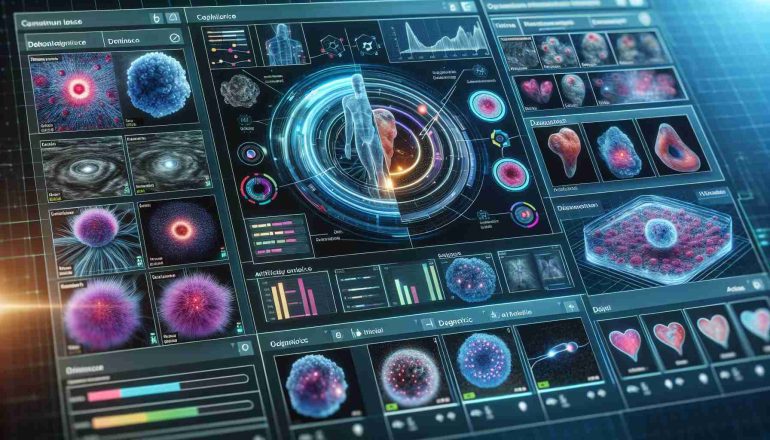- A new AI model, CHIEF, enhances cancer diagnostic accuracy by 36%, outperforming current systems.
- Developed by Harvard Medical School, CHIEF provides real-time, multi-cancer diagnostic evaluations.
- Trained on a massive dataset of 15 million images and refined using 60,000 high-resolution tissue slides.
- Achieves 94% accuracy in detecting cancer cells across 11 cancer types.
- Further testing in clinical settings is needed to ensure consistent performance across diverse populations.
- Challenges include data privacy, ethical concerns, integration into clinical workflows, and regulatory approvals.
- CHIEF’s success depends on the quality of data and may require significant investments in infrastructure and training.
- Over-reliance on AI could diminish human diagnostic skills over time.
Main AI News:
A groundbreaking development in cancer diagnostics is set to transform oncology thanks to a cutting-edge artificial intelligence system known as the Clinical Histopathology Imaging Evaluation Foundation (CHIEF). This advanced AI model has demonstrated an ability to improve diagnostic accuracy by up to 36%, outperforming existing deep learning systems in identifying cancer types, pinpointing tumor origins, and predicting patient outcomes.
Created by a team from Harvard Medical School, CHIEF was designed to tackle various diagnostic challenges. While earlier AI models typically focused on specific tasks, CHIEF offers real-time, precise second opinions across multiple cancers. This nuance makes it an invaluable, multi-functional tool for clinicians, enabling them to rely on more accurate and faster diagnostics.
CHIEF’s development was made possible by an enormous dataset containing over 15 million pathology images. Researchers further refined the model using 60,000 high-resolution tissue slides to ensure its precision. During the validation phase, the AI model was tested on over 19,400 images from 24 hospitals worldwide, proving its ability to predict clinical and genetic outcomes accurately.
Early results have been impressive, with CHIEF achieving a 94% accuracy rate in detecting cancer cells across 11 different types of cancer. Despite these promising outcomes, further testing is needed in clinical environments to ensure the model performs consistently across diverse populations. Full-scale deployment in healthcare settings will require careful validation.
Artificial intelligence continues to disrupt healthcare, and CHIEF is poised to impact cancer diagnostics significantly. Unlike earlier AI models limited to specialized tasks, CHIEF stands out with its ability to analyze multiple types of cancer simultaneously. This versatility allows clinicians to perform comprehensive evaluations more efficiently, reducing the time it takes to arrive at critical diagnoses.
However, several challenges lie ahead. The extensive use of patient data raises significant privacy and ethical concerns, particularly regarding protecting sensitive information while ensuring the model has access to the diverse datasets required for practical training. Additionally, integrating CHIEF into existing clinical workflows may take time and effort. Medical professionals will need to be trained to interpret AI-generated results, and systems must be established to ensure that AI tools complement, rather than complicate, diagnostic processes.
Another hurdle involves regulatory approvals, which are notoriously complex. CHIEF will need to demonstrate its accuracy, reliability, and safety in real-world applications before it can gain approval for widespread clinical use.
The advantages of CHIEF are clear. Its ability to detect cancers with up to 94% accuracy is a significant improvement over current diagnostic tools. Its real-time evaluation capabilities could help reduce patient waiting times, allowing for earlier interventions. CHIEF offers a comprehensive patient assessment that reduces diagnostic fragmentation by providing a more holistic analysis of multiple cancer types.
Nevertheless, the model’s effectiveness depends heavily on the data quality used in its training. Inaccurate or biased data could undermine its performance. Additionally, implementing such advanced AI tools in healthcare settings may require significant financial investment in infrastructure and training, making CHIEF less accessible to some institutions. There is also a concern that clinicians may become too reliant on AI, potentially weakening their diagnostic skills over time.
As CHIEF moves toward broader use, it represents a promising step forward in cancer diagnosis. However, addressing the challenges of privacy, integration, and regulation will be crucial to ensuring its success and widespread adoption in clinical practice.
Conclusion:
The introduction of CHIEF represents a significant leap forward in oncology and medical diagnostics. This AI model can potentially disrupt the cancer diagnostics market by setting new accuracy, efficiency, and scalability standards. It signifies a growing shift towards AI-driven tools, which can expedite diagnostic processes, reduce human error, and offer more comprehensive patient assessments for the healthcare industry. However, market adoption will be influenced by data quality, privacy concerns, and the significant capital investment required for implementation. Companies developing AI diagnostic tools will find opportunities to expand in this growing sector. Still, they must also be prepared to navigate complex regulatory environments and address the risks associated with over-dependence on automation in healthcare decision-making.

